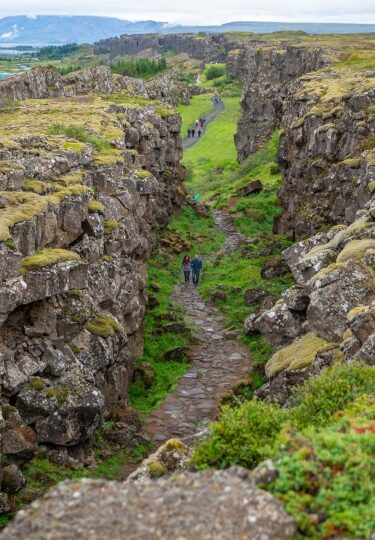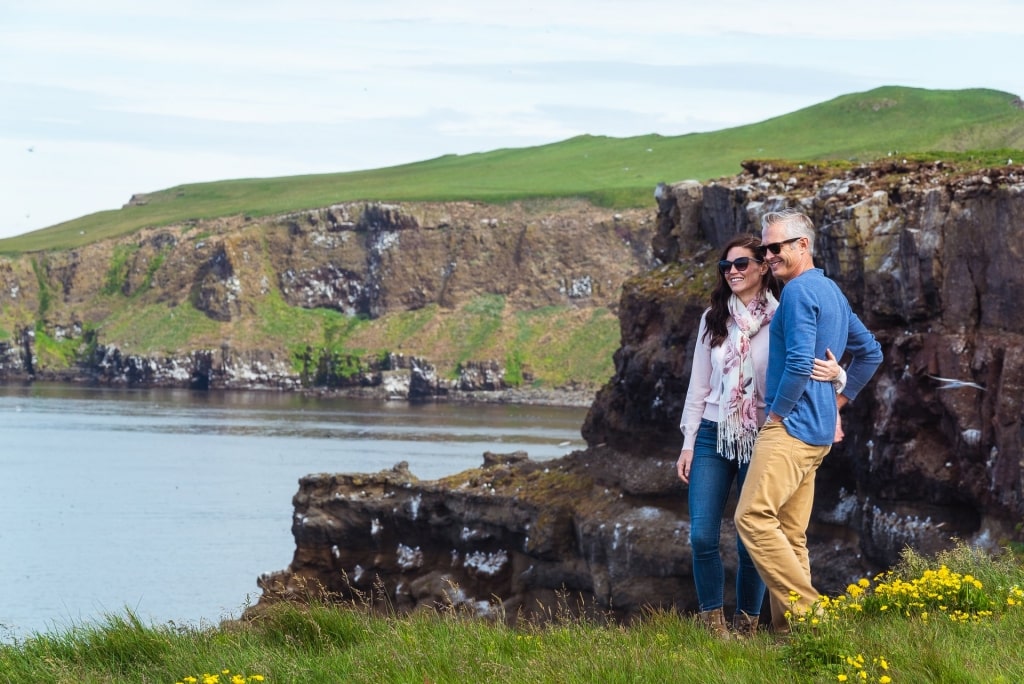Iceland’s natural beauty is stark, wild, and otherworldly, with landscapes of jagged lava flows, towering waterfalls, creaking glaciers, and vast, open vistas shaped over the millennia by ice.
The most beautiful places in Iceland are awe-inspiring. The country is home to three national parks, where there are steaming Icelandic hot springs, active volcanoes, and waterfalls cascading into deep rock fissures.
The capital, Reykjavik, is also characterized by some of the prettiest places in Iceland, including Harpa, a glass-sided waterfront concert hall; Hallgrimskirkja, a soaring modernist church, and attractive lanes crammed with colorful street art.
Iceland might offer some of the world’s most beautiful landscapes, but the country is fairly compact and smaller than the state of New York. There are few roads, though, and the fjord-indented coastline spans 3,000 miles, so plan your visit carefully to take in as much as possible of this extraordinary country.
Discover Iceland’s most beautiful places below.
Grimsey Island
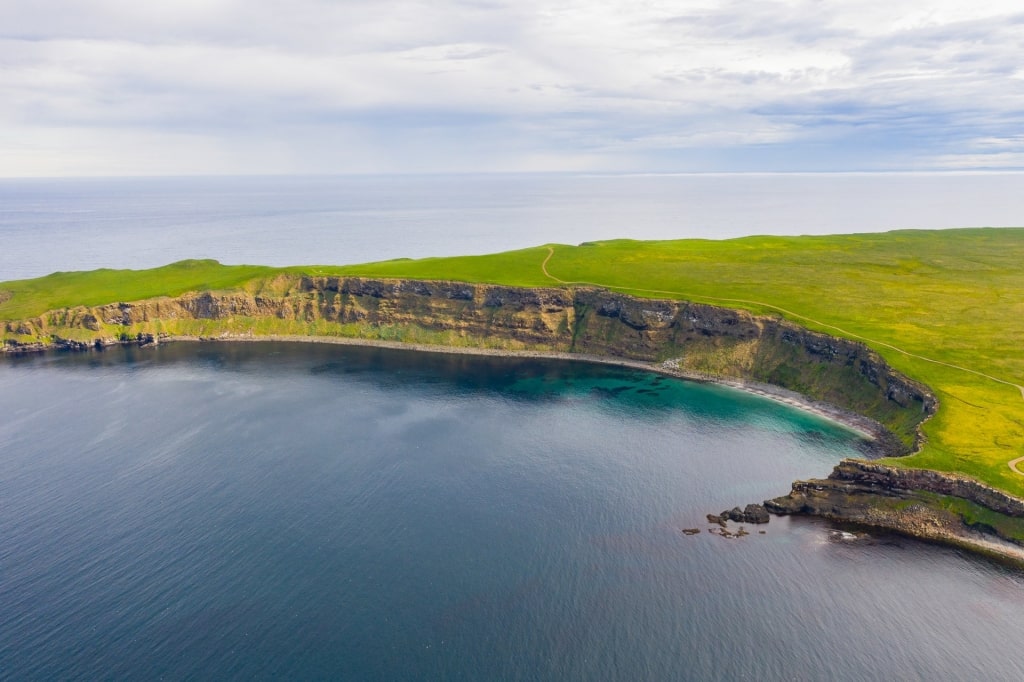
Grimsey Island
If you’re hoping to catch a glimpse of Iceland’s famous Atlantic puffins, Grimsey Island, 24 miles off the country’s north coast, is a must, located partially within the Arctic Circle. Puffins nest in Grimsey Island from mid-April through the beginning of August.
A regular ferry service runs from Dalvík, just north of Akureyri, to Grimsey Island in summer, taking three hours each way. Better still, take to the skies for a scenic plane ride to witness one of the most beautiful places in Iceland from the air.
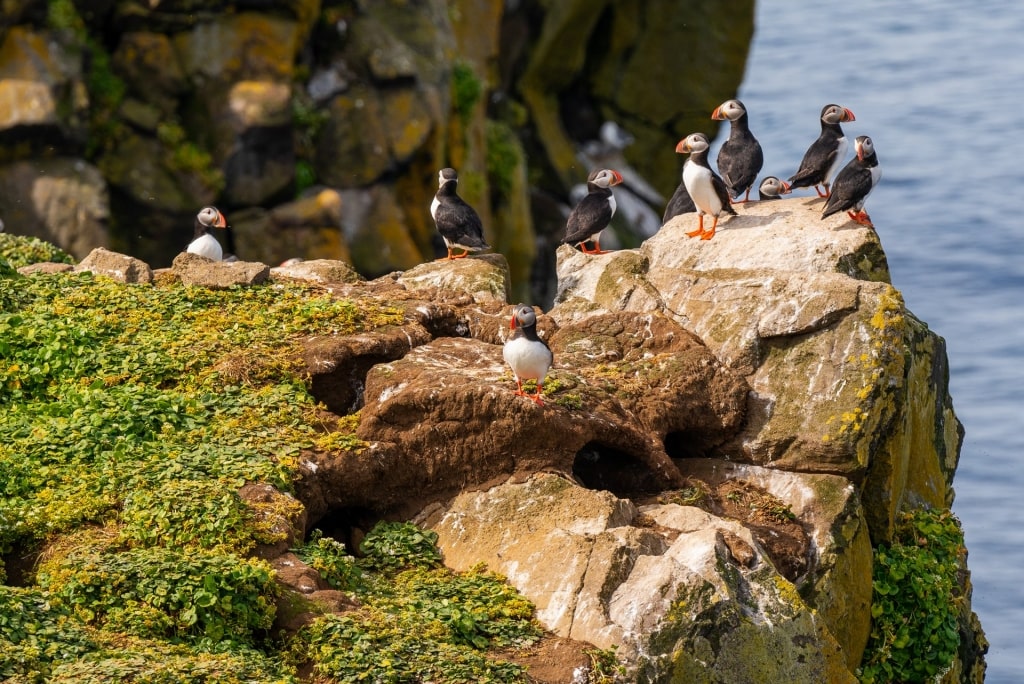
Grimsey Island
Tiny Grimsey is carpeted in a layer of emerald-green grass and is home to a church, a windmill, a lighthouse, and just 100 people. The one million seabirds are Grimsey’s biggest draw, with black-legged kittiwake, northern fulmar, Atlantic puffin, razorbill, black guillemot, and thick-billed murre among the species that nest on the island’s cliffs. A cruise around the island is one of the best ways of getting a closer look at the birdlife.
Thingvellir National Park
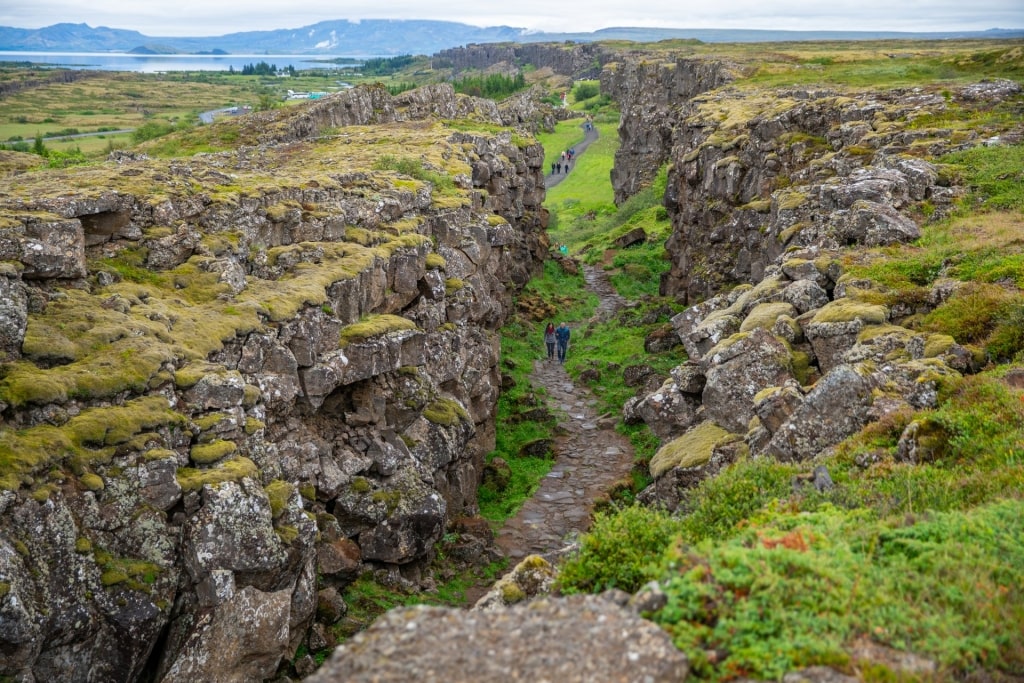
Thingvellir National Park
The UNESCO-listed Thingvellir (Þingvellir) is a remarkable national park and one of the most beautiful places in Iceland for its seemingly infinite, ravine-filled landscapes.
Thingvellir was the first national park established in Iceland, in 1928, and lies roughly 27 miles northeast of Reykjavík, forming part of the country’s Golden Circle route that also includes the Geysir Geothermal Area and Gullfoss Waterfall.
Thingvellir, which means “Assembly Plains”, holds deep historic significance as the location of Iceland’s founding parliament, The Alþingi, which was established here in 930—making it the oldest parliament in the world. The country’s parliament convened here for 868 years, until 1789.
Central to Thingvellir is Almannagjá, a deep gorge formed by the movements of the North American and Eurasian continental plates that run through Iceland and contribute to its unique geology.
Follow the hiking route through Almannagjá to reach Öxaráfoss, a stunning waterfall near the Arctic char-filled Þingvallavatn, one of Iceland’s largest lakes.
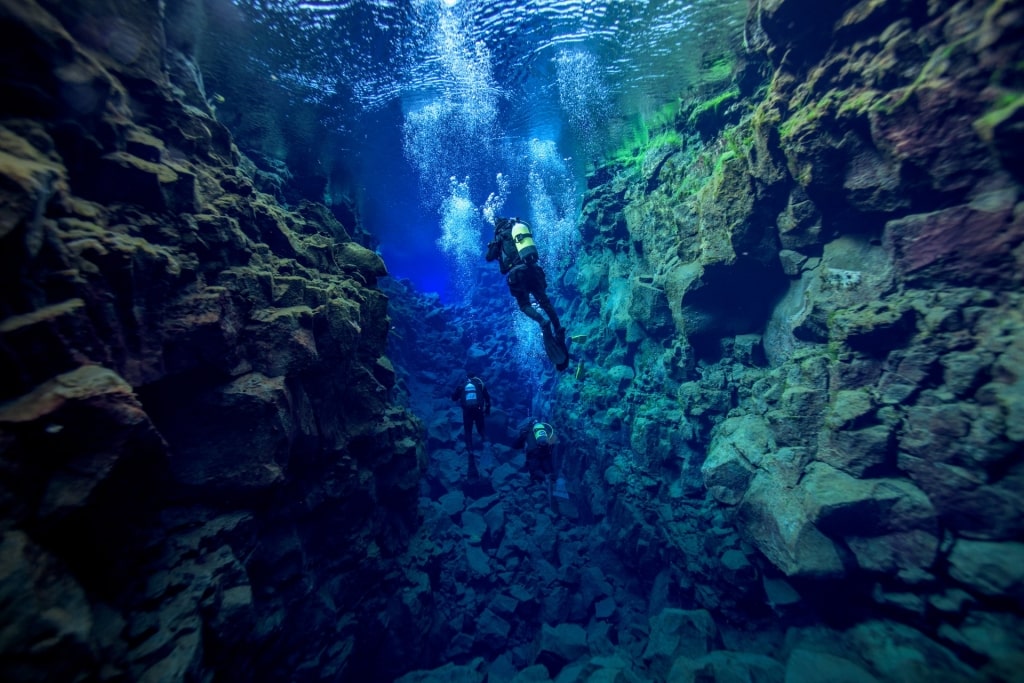
Silfra Fissure, Thingvellir National Park
Aside from being home to some of the best hikes in Iceland, there are plenty of other activities on offer within Thingvellir National Park, including angling, horseback riding, and scuba diving in the crystal-clear Silfra fissure on the northern tip of Þingvallavatn.
The visibility in the fissure, filled with glacial meltwater, is extraordinary, as are the rock formations in the chasm. This is the place for the ultimate selfie: underwater, between the North American and Eurasian tectonic plates.
Godafoss Waterfall
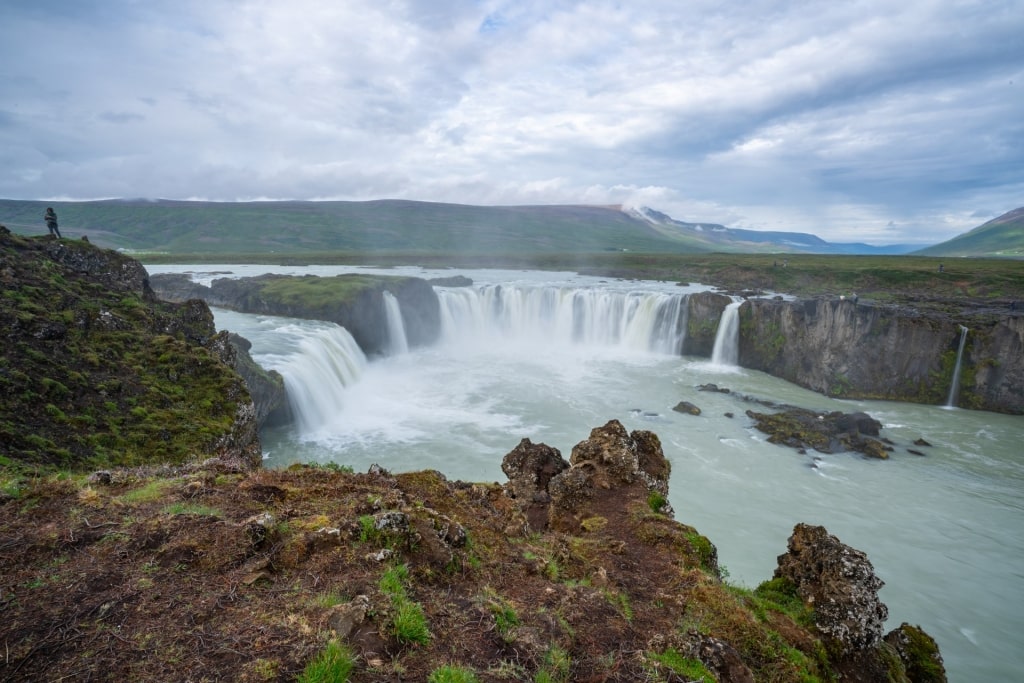
Godafoss Waterfall
Gallons of foaming white water from the Skjálfandafljót River gushes over the horseshoe-shaped Godafoss—meaning “waterfall of the gods”—every second, creating one of Iceland’s most spectacular waterfalls.
Easily reached from Akureyri, just off the country’s ring road, Godafoss is one of the prettiest places in Iceland, with multiple viewing points to watch the water plummet 40 feet into the Bárðardalur valley below. Wear waterproofs if you prefer to stay dry.
Vatnajökull National Park

Vatnajökull National Park
In southeast Iceland, within the Vatnajökull National Park, lies one of the world’s largest glaciers by volume, the Vatnajökull ice cap, which forms dazzling blue-white ice caves each winter.
Awarded national park status in 2008, Vatnajökull perfectly demonstrates why Iceland is known as the Land of Fire and Ice. Covering 13 percent of the country, Vatnajökull features two ice-covered active volcanoes, Grímsvötn and Öræfajökull; the country’s highest peak, Hvannadalshnúkur; plus Icelandic beaches, rivers, ridges, outer glaciers, and an abundance of wildlife.

Jökulsárgljúfur canyon
Each region of Vatnajökull National Park offers something different. Look out for herds of reindeer and grazing Icelandic horses in the east, and moss-covered lava fields and hyaloclastite ridges in the south.
The Jökulsárgljúfur canyon and Iceland’s largest and Europe’s most powerful waterfall, Dettifoss, are in the north, with the country’s largest glacier lagoons, Jökulsárlón and Fjallsárlón in the west.
Pick a region to explore and follow a designated hiking route. You can either go it alone or join a guide who will explain the surrounding flora, fauna, and geology.
Read: What to Pack for Iceland
Vigur Island
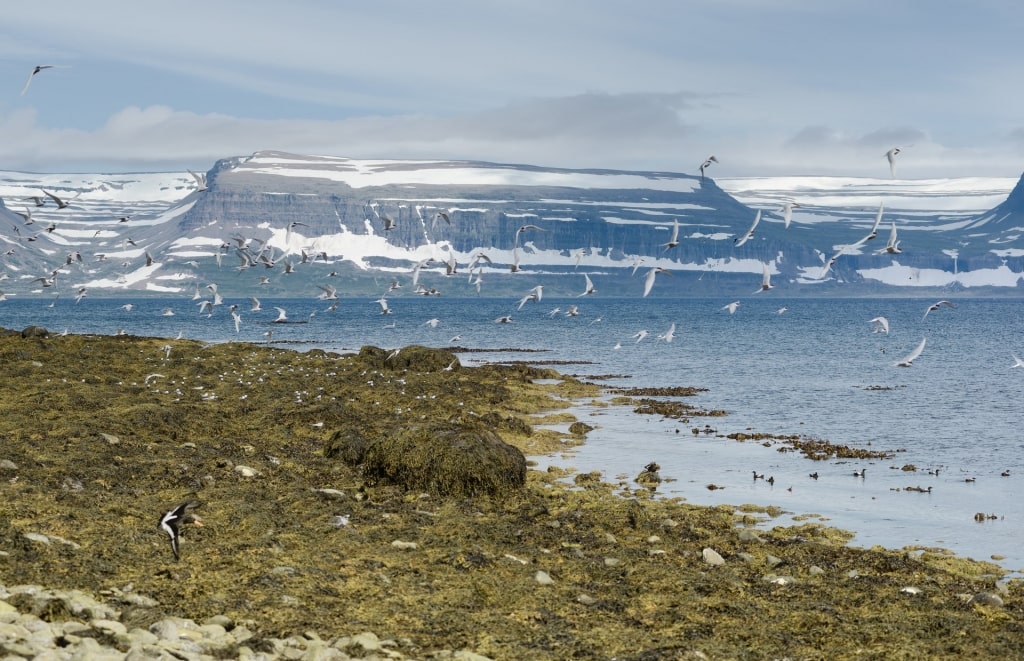
Vigur Island
Vigur Island, a 30-minute boat ride from the northwest hamlet of Ísafjörður, is one of the most beautiful places in Iceland. The remote island is home to just one family—the sixth generation to have lived and farmed on the island. Among the items farmed by the family is the soft, feathery down of the island’s eider ducks, used to fill pillows and padded quilts.
Enjoy a guided tour of Vigur, spotting puffins, black guillemots, and razorbills among the birdlife that enjoy the big skies and fresh air of Vigur Island. Watch out for the sometimes belligerent arctic terns that will dive-bomb intruders to protect their eggs. The money shot, if you’re lucky enough to capture it, is an Atlantic puffin clasping a glut of silvery capelin in its burnt-orange beak.
Marvel at the jewel-colored Djupfjord as you return to the mainland. Wear warm clothes and sturdy walking shoes to navigate the island’s gravel paths.
The Blue Lagoon
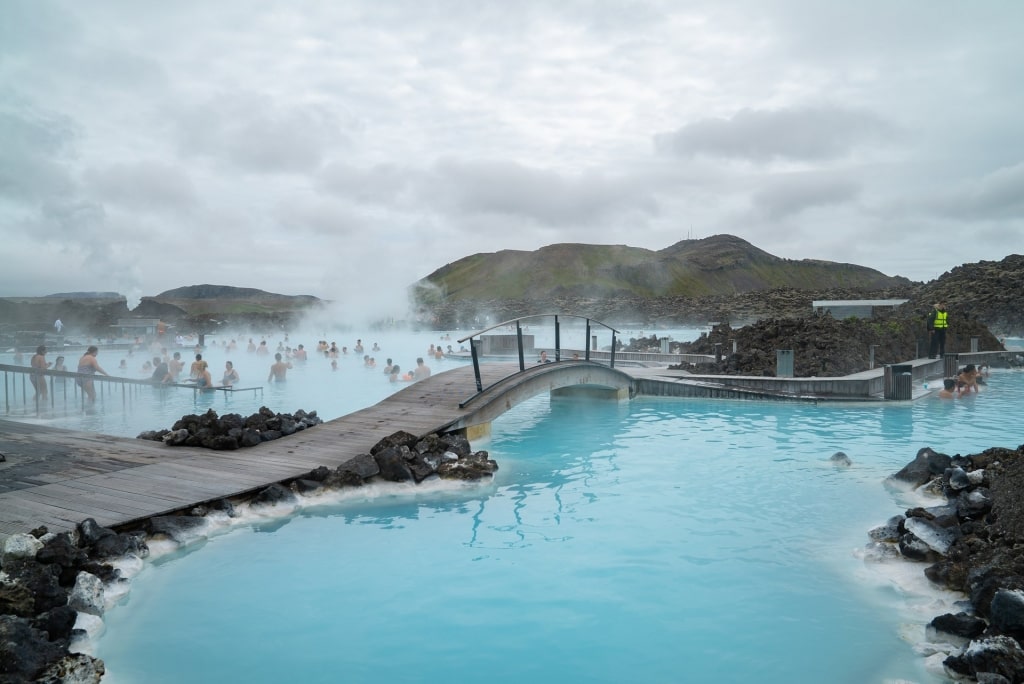
The Blue Lagoon
Surrounded by lava fields, snowy mountains, and charcoal-hued rocks, the otherworldly Blue Lagoon is arguably one of the best places to visit in Iceland. Located on the Reykjanes Peninsula, a short distance from Reykjavik, the geothermal lagoon is powered by the neighboring Svartsengi Power Station, with the water known for its steaming, milky-blue appearance.
Step into the candescent bathing water, rich in silica and sulfur, and daub on a clay face mask; a pot of mineral-rich clay is given to every visitor. Wallow in the soothing water, which is typically heated to around 98–102F.
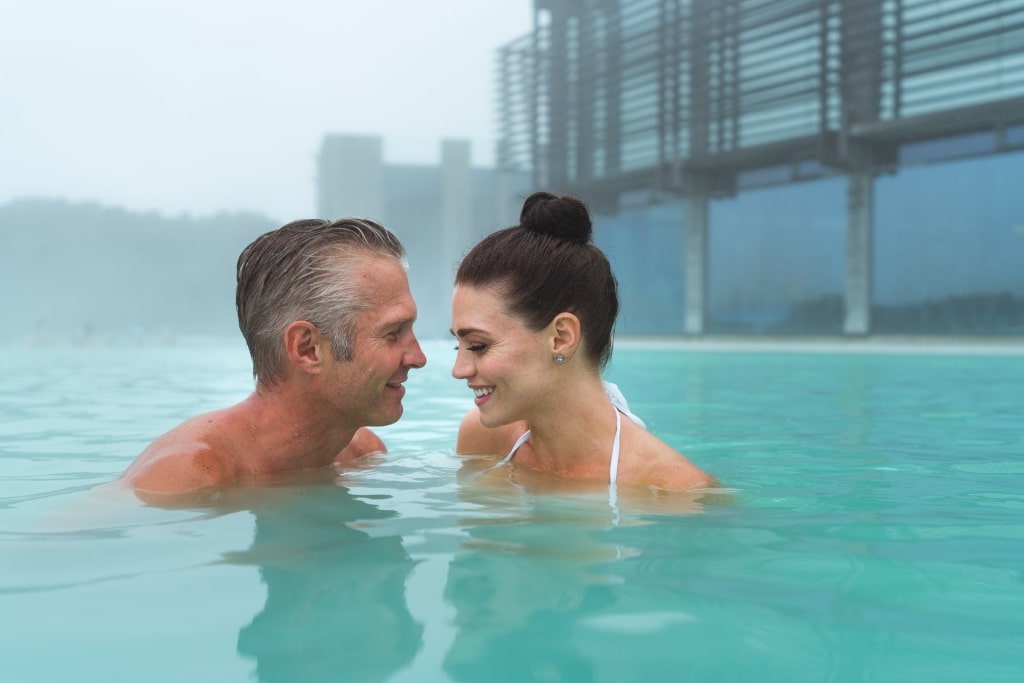
The Blue Lagoon
If you plan on getting your hair wet, it’s advisable to use a conditioner before entering the water as the geothermal water, although beneficial to the skin, can leave hair tangled and matted. Towel rental, along with complimentary shower gel, hair conditioner, and moisturizer are available to use in the shower and drying areas.
To get even more of a glow, indulge in a Blue Lagoon spa treatment, with facials and massages offered using the company’s own-label skin and body care products. There’s also a wonderful folk music center, an independent Icelandic brewery, Segull 67, that offers tours and tastings, and a handful of restaurants.
Reykjavik
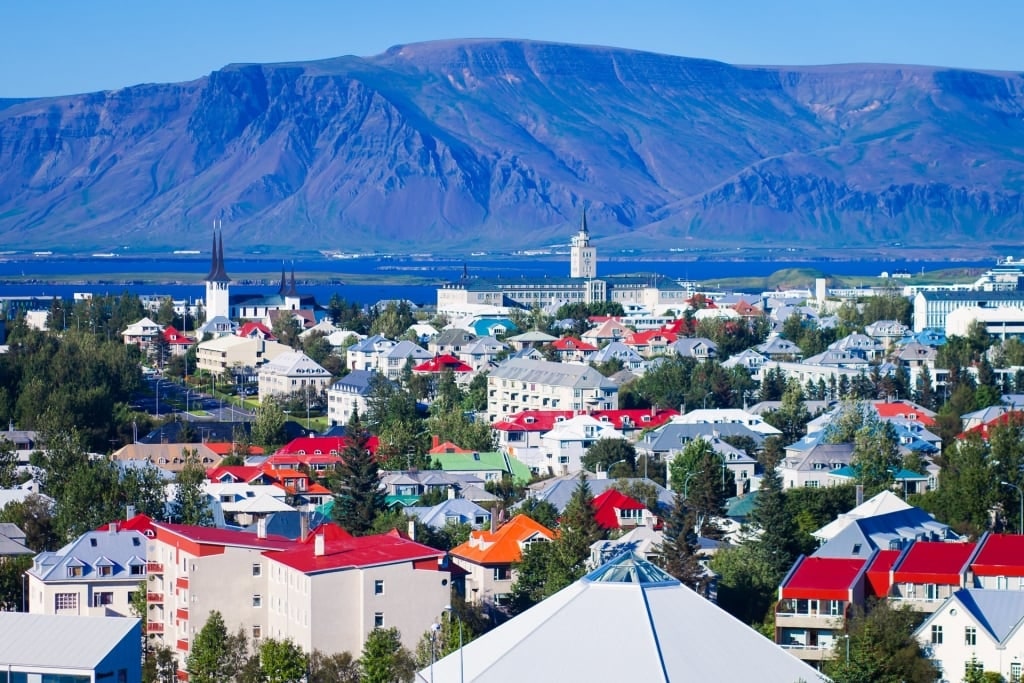
Reykjavik
Reykjavik, the most northerly capital city in the world and where the majority of the country’s residents live, is one of the prettiest places in Iceland to explore on foot. The compact city offers design-centric boutiques, cool thrift stores, culture-packed museums, and an array of colorful ironclad houses in blues, reds and greens.
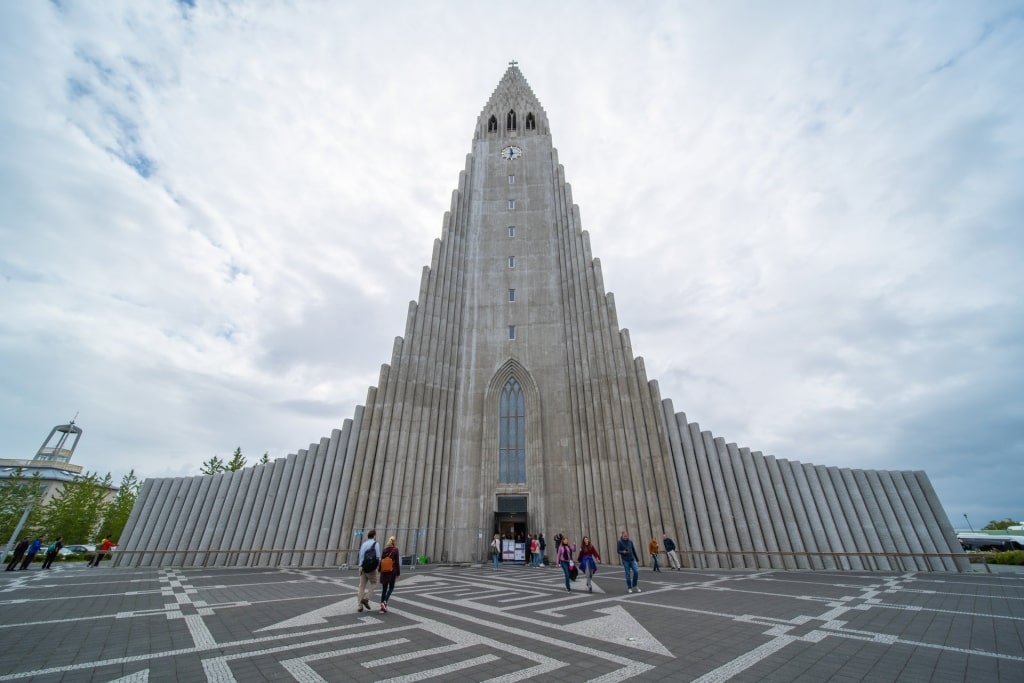
Hallgrimskirkja
Reykjavik’s star attraction is the iconic Guðjón Samúelsson-designed Lutheran church, Hallgrimskirkja. Completed in 1986, having taken 40 years to build, the modernist building sits on a hill at one end of Skólavörðustígur and is visible from almost anywhere in the city. You can take an elevator to the church’s observation deck to soak up the city views.
One of the best things to do in Reykjavik is to stroll the sidewalks downtown, including Laugavegur and Hverfisgata, to drink in the city’s extravagant display of street art and vibrant murals. Head for the waterfront to take in the striking harborside concert hall, Harpa.
Opened in 2011, Harpa features a glass facade that cleverly reflects the glistening water and mountains facing it. Time your visit right and you can even catch a performance by the Iceland Symphony Orchestra, Icelandic Opera, or Reykjavík Big Band.
Eyjafjordur
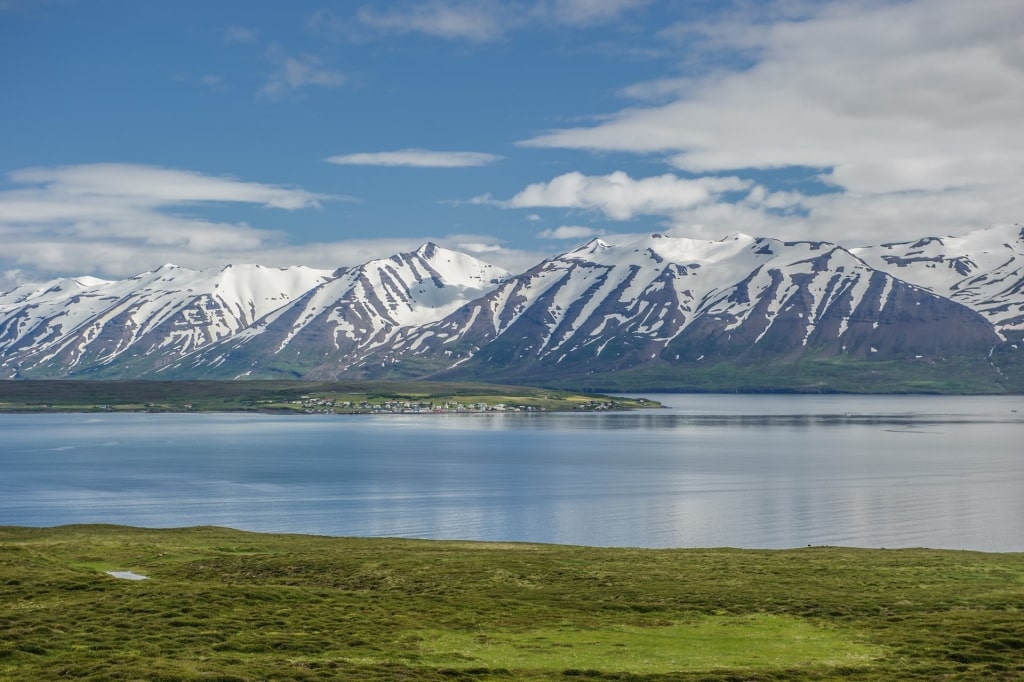
Eyjafjordur
One of the largest fjords in Iceland, Eyjafjörður is a 44-mile inky stretch flanked by lofty, snow-covered mountains. Akureyri, known as the capital of the north, lies at the end of the fjord with a scattering of traditional fishing villages lining the shores.
Eyjafjörður is one of the most beautiful places in Iceland to spot white-beaked dolphins, harbor porpoises, humpback, orca, blue, and fin whales, often seen in the waters around the fjord.
Make the 15-minute ferry journey from Ásskógssandur to Hrísey Island—the second largest island in Iceland, located in the middle of the fjord—to spot some of the 40 species of birds that nest there. Follow one of the three marked routes on the island. There’s a pretty white church, a heritage museum, restaurant, and gift store here.
Gullfoss Waterfall
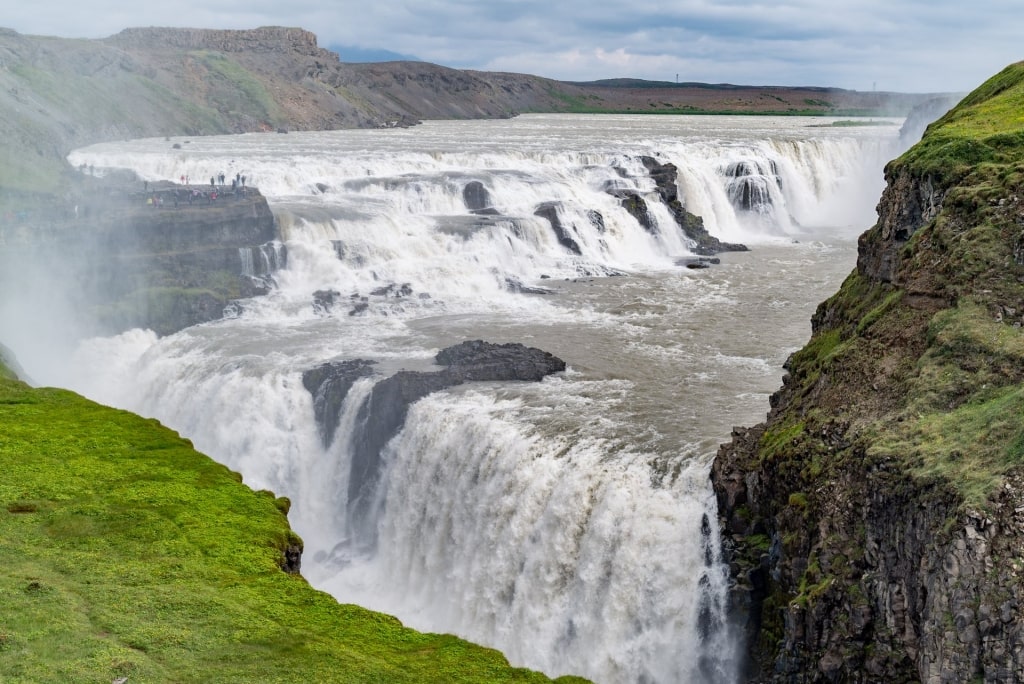
Gullfoss Waterfall
In the southwest of Iceland, Gullfoss is a spectacular, 104-foot tiered waterfall in the Hvitá River. It’s one of the most popular natural attractions in Iceland for its dramatic white falls, with the water rushing out of the Langjökull glacier.
Feel Gullfoss’s refreshing spray from the viewing area, with some 5,000 cubic feet of water thundering over the gorge every second during summer in Iceland. Once you’ve captured the frothing Gullfoss, stop by the onsite café to refuel and browse the gift store for a selection of souvenirs.
Lake Myvatn
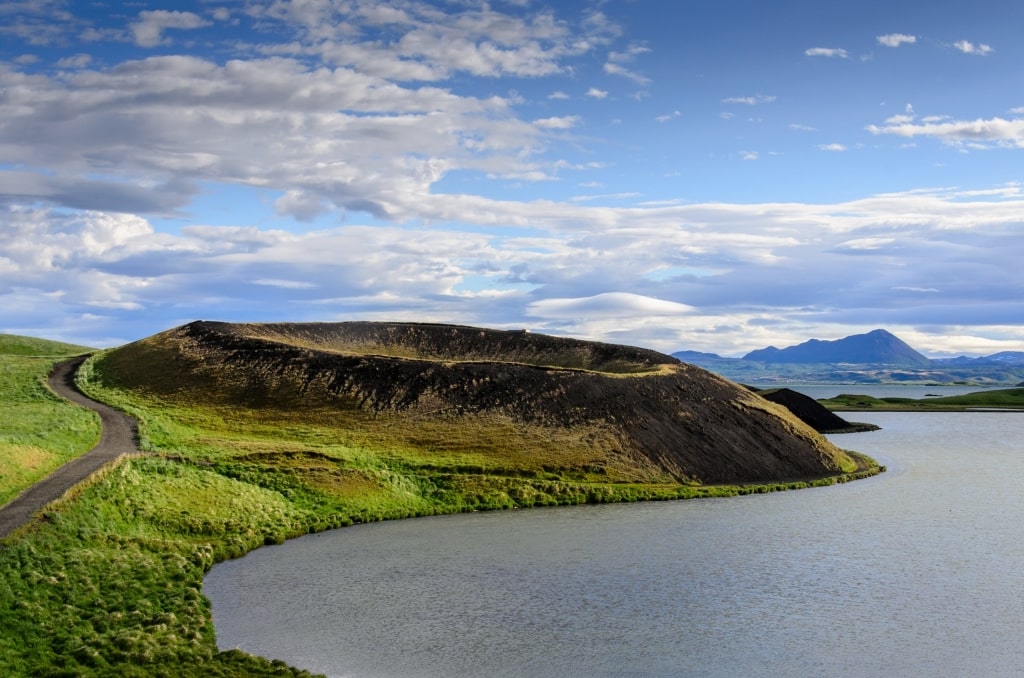
Lake Myvatn
Visit Lake Mývatn, one of the most beautiful lakes in Europe, to witness its extraordinary hot springs, lava fields, and serene wildlife. Look out for the rich birdlife on a hike around a section of the lake, with more duck species found in Lake Mývatn than anywhere else in the world.
On the northwest side of the lake, near the town of Reykjahlíð, head to the Námaskarð Pass on Mount Námafjall, to see the hissing fumaroles and ocher-colored clay landscape before relaxing at the nearby Mývatn Nature Baths. Pack your bathing suit and take a dip in the bubbling, mineral-rich geothermal waters.
Siglufjordur
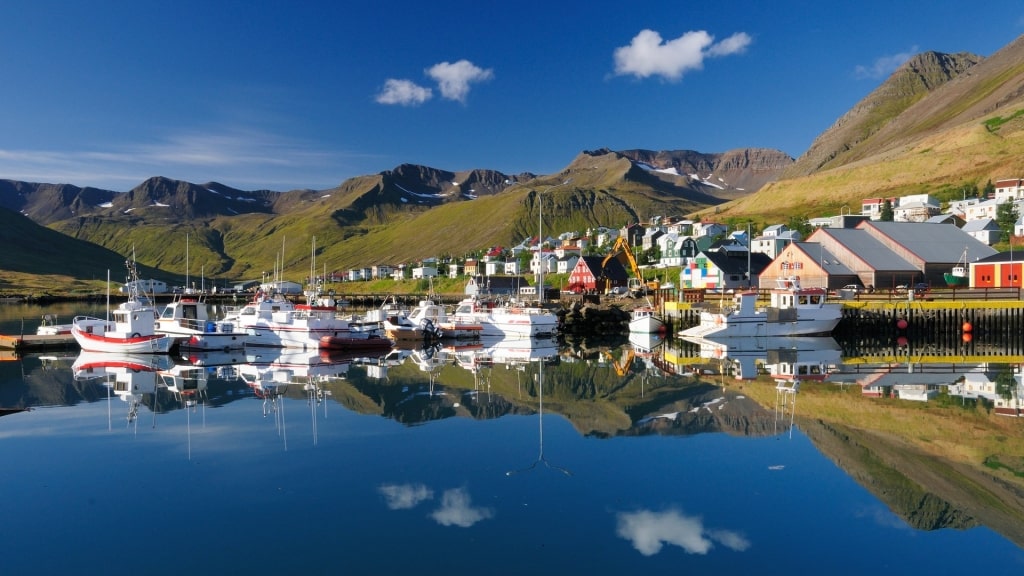
Siglufjordur
Siglufjordur is Iceland’s northernmost town and is known for its fishing heritage. The town lies on a pristine fjord of the same name, surrounded by gorgeous Icelandic mountains that offer cross-country trails and some of the region’s best Nordic skiing.
There are plenty of outdoor activities on offer in Siglufjordur, including swimming, kayaking, and hiking. Explore Siglufjordur’s fascinating Herring Era Museum to learn about how the town became known as the herring capital of the Atlantic. There’s also a wonderful folk music center, an independent brewery, Segull 67 that offers tours and tastings, and a handful of restaurants.
Strokkur
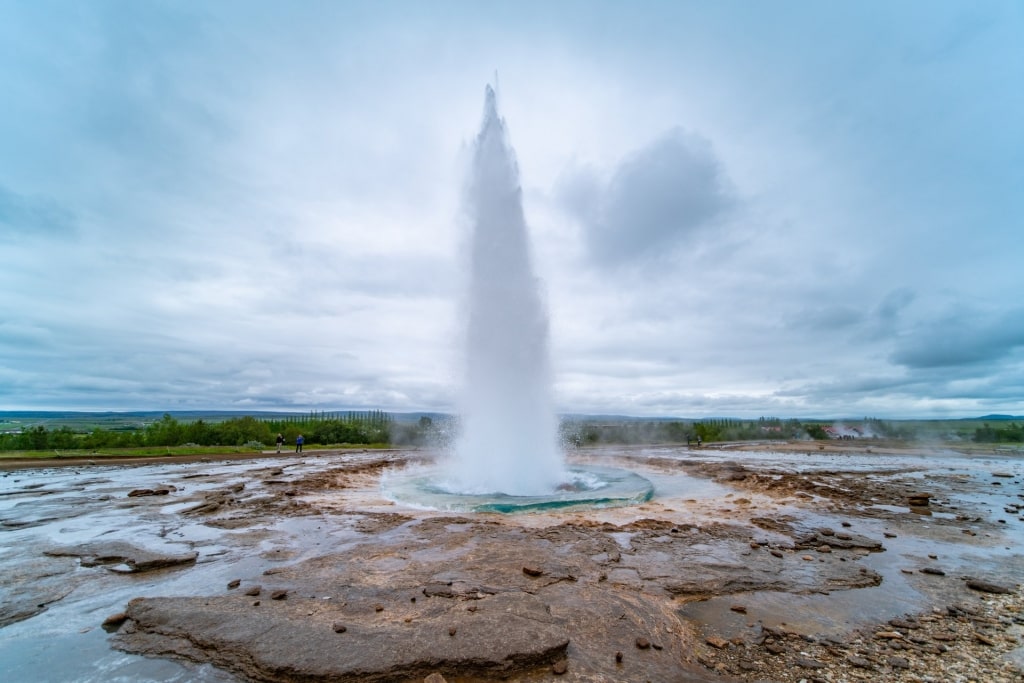
Strokkur
This active geyser within Iceland’s Geysir Geothermal Area is a dynamo of the country’s Golden Circle sightseeing route. The geyser occurs due to magma bubbling near the earth’s surface, which boils the glacial meltwater from Langjökull—the second-largest glacier in Iceland—creating a towering fountain in the vast Haukadalur valley. Erupting every five to 10 minutes, Strokkur blasts steaming water some 65 feet into the air.
Visit Strokkur itself, along with a scattering of smaller geysers, fumaroles, and some of the best hot springs in the world found in the sulfur-dyed ground of this astonishing geothermal area.
Langjökull Glacier

Langjökull Glacier
There’s an excellent reason Langjökull—“the long glacier”—gets so much hype. This vast blue sheet of shrinking ice, the second-largest ice cap in the country (after Vatnajökull), is one of the prettiest places in Iceland.
Langjökull is roughly 1,900 feet thick at its deepest point, lying over a group of hyaloclastite mountains, two active volcanoes, and surrounded by lava fields. As well as feeding the geysers within the Golden Circle, Langjökull also feeds the river Hvítá and Gullfoss waterfall.
There are a number of exhilarating ways to enjoy the Langjökull glacier. Snowmobiling is one of the most popular. Hiking, skiing, and jeep safaris are possible, too; wear sunblock and pack sunglasses to protect your skin and eyes from the reflections off the snow.

Langjökull Glacier
You can also explore the cobalt-blue glacier from within a manmade ice tunnel near Langjökull’s highest peak. Temperatures inside the ice tunnel hover around 32F, so wrap up warm with plenty of layers and waterproof clothing.
You’ll head deep under the ice along the softly lit corridor, through dripping caverns and over rivers tumbling through the blackness. There’s even a wedding chapel here for the most unusual of settings.
Guides point out the different layers of ice that have been created from snowfall over the years; a black horizontal stripe is the snowfall of 2010, when the erupting Eyjafjallajökul volcano threw ash high into the sky, disrupting aviation worldwide.
Read: Iceland vs Greenland: Which Should You Visit?
Explore the most beautiful places in Iceland on a cruise. Discovering Iceland’s vast, volcanic landscape and rich, centuries-old culture will create memories to last a lifetime. Browse our cruises to Iceland and book an unforgettable vacation.
